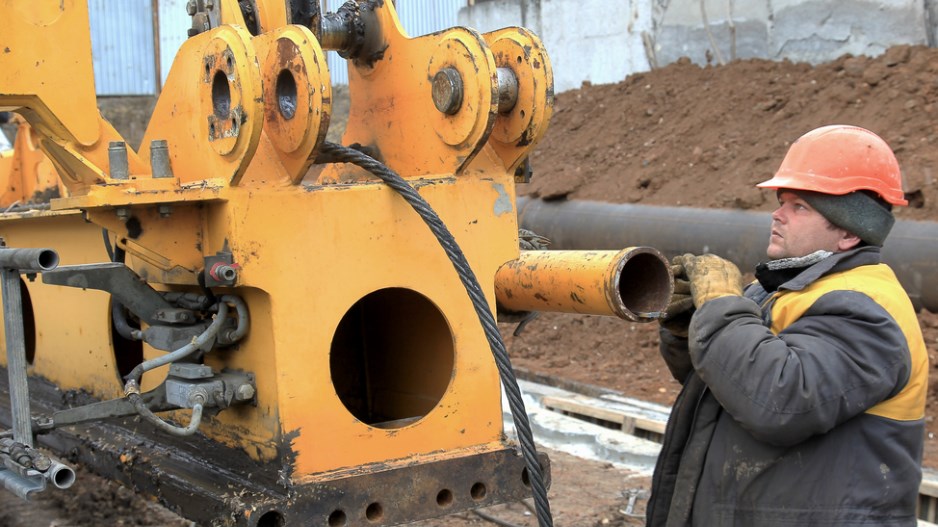It’s treated as a conventional wisdom: northeast British Columbia has more jobs than it has workers to fill them.
Potential reforms to the federal government’s controversial temporary foreign workers program, however, could put the Peace Country’s “worker shortage” under a harsh light.
Fiona MacPhail, an economics professor at the University of Northern British Columbia who specializes in labour issues, said the widespread labour shortage in northern B.C. is a misnomer.
“It’s not really a labour shortage – it’s a skill mismatch,” MacPhail said. “The skills that are being demanded are not the same that are being supplied.”
MacPhail added that the northeast’s high rate of joblessness comes as a surprise to many people – a good indication that we’re short on specific data about regional unemployment. In April, the three-month average unemployment rate in the region was 8.6% – several points above the provincial average of 6.1%. That same month, the Canadian average was 6.9%.
“It’s inconsistent to say we have a labour shortage [in the north] when we have high unemployment rates,” she said.
The revelation of the high rates of joblessness was the catalyst for the government’s decision to freeze and reevaluate the fast food industry’s use of temporary foreign workers. A study from the C.D. Howe Institute concluded, among other things, that not enough is known about regional unemployment to declare a “labour shortage.”
The report also found that temporary foreign workers had fueled unemployment growth in Alberta and B.C.
The fast food industry was barred from the program earlier this spring, after widespread reports that, contrary to the program’s mandate, many employers were not giving preference to Canadian workers.
Employment minister Jason Kenney is expected to announce reforms to the temporary foreign workers program in June. Among potential changes that were leaked to the CBC are provisions that would require employers who use temporary foreign workers to pay better than minimum wage. As well, access to the program could be tied to regional unemployment.
That could further complicate matters for Peace Region restaurant owners. According to the latest data from B.C. Stats, the northeast consistently has the highest regional unemployment in the province, despite claims that restaurants would have to close or cut hours without temporary foreign workers.
To be eligible for the program, an employer must demonstrate a shortage of workers with what’s called a labour market opinion (LMO) – a government report certifying that an employer had adequately advertised for Canadian labour, offered a reasonably competitive wage and been unable to find workers.
According to the C.D. Howe report, many employers found the LMO process onerous, and several years ago, the government introduced an “expedited” option that allowed business owners easier access to pools of foreign labour.
Since around 2007, the number of temporary foreign workers in the Peace increased across the board. There is no definitive number for how many temporary foreign workers are in the northeast, but according to data from 2012, there were 265 workers on positive LMOs in Dawson Creek, 745 in Fort Nelson and 325 in Fort St. John. More than 3,000 had work in “other” non-urban areas of British Columbia.
However, an LMO isn’t the only way someone can get temporary work in Canada. The C.D. Howe report found that in 2011, only around 37% of temporary foreign workers had work in positions requiring LMOs.
MacPhail said the “worker shortage” in the Northeast comes down to wages: unlike the rest of the country, there is a wealth of work in the Peace that pays well and has relatively low barriers to entry. That should push wages up, she said, but fast food wages can only go so high while keeping prices competitive.
In many cases, Peace Country fast food restaurants already pay better than minimum wage. According to a company spokesperson, the Dawson Creek Tim Hortons employs temporary foreign workers, and pays all its employees greater than $10.25 an hour.
Whether a requirement that temporary foreign workers be paid a set some amount above minimum wage would increase prices is not up to the franchise owner, but rather the company, which sets its prices regionally.
At this point, it’s unclear what provisions the reformed program will make for abnormal labour markets like the Peace.
Prince George-Peace River Bob Zimmer told the Alaska Highway News that he “understands the need of the North,” and is trying to make sure those needs are accounted for in any changes to the temporary foreign workers program.
Regardless, MacPhail says northerners should take any claims of worker shortages with a grain of salt.
“There’s general acceptance now that it’s not a widespread labour shortage,” she said. “People have to pay more attention to that argument.”




